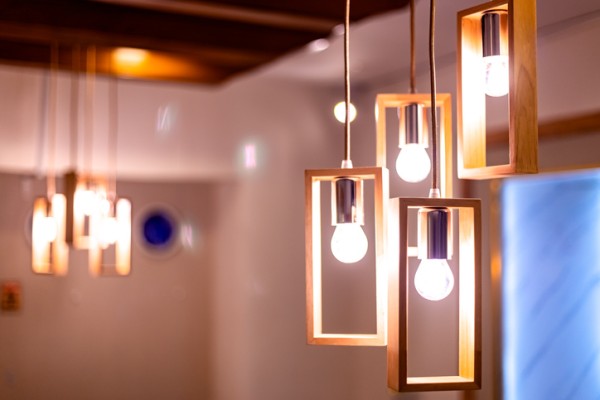
Lighting does more than just help you see — it shapes the mood, improves functionality and highlights the design of every room. Whether you’re planning a new build or upgrading an older home, understanding the different types of lighting is key to creating a space that’s practical, stylish and energy efficient.
In Australian homes, lighting is generally divided into three broad categories: ambient, task and accent lighting. Most rooms benefit from a combination of all three. Let’s break down what they mean and explore the types of fittings that fall under each.
Ambient lighting: your main source of light
Ambient lighting (also known as general lighting) provides overall illumination for a room. It allows you to move around safely and comfortably, and it sets the tone for the space.
Common ambient lighting types:
- Ceiling-mounted lights: These include surface-mounted fixtures and flush-mounted domes — common in bedrooms, hallways and laundries.
- Pendant lights: Hung from the ceiling and available in a wide range of styles, pendants are ideal for entryways, dining rooms or open-plan spaces.
- Chandeliers: Decorative and dramatic, these work best in large rooms with higher ceilings.
- Downlights: Recessed into the ceiling, they’re often used in living rooms, kitchens and bathrooms. Opt for IC-rated LED versions to improve safety and energy efficiency.
If you’re designing for natural light as well, ambient lighting should complement it, not compete. A well-lit space doesn’t mean it has to be overlit. Consider dimmers to give you greater control over the brightness throughout the day.
Task lighting: for function and focus
Task lighting is all about visibility for specific activities — reading, cooking, working or grooming. It’s more focused than ambient light and is often placed lower or closer to the user.
Common task lighting types:
- Desk and floor lamps: Great for reading, studying or hobby areas.
- Under-cabinet lights: Ideal for kitchen benchtops to reduce shadows while cooking or prepping food.
- Bathroom mirror lighting: Think vertical lights on either side of the mirror to reduce facial shadows.
- Adjustable wall sconces: Mounted at the bedside or reading nook for directional lighting.
The key to good task lighting is placement — light should come from the side or above without causing glare or casting shadows. For kitchens and bathrooms in particular, check that fittings meet the appropriate AS/NZS safety standards for moisture-prone areas.
Accent lighting: style, contrast and highlights
Accent lighting adds drama and depth by drawing attention to architectural features, artworks or furnishings. It’s often used to add warmth and interest to a room — especially in the evening — and is a powerful tool in interior design.
Common accent lighting types:
- Track lighting: Directional and adjustable, perfect for gallery walls or highlighting feature areas.
- LED strip lights: Installed under shelves, cabinetry or steps for a subtle glow.
- Outdoor uplighting or wall washers: Used to illuminate garden features, facades or pathways.
- Pendant lights as accent: Used more for their shape or glow than for general illumination.
Accent lighting should be layered with ambient and task lighting to create flexible spaces that feel cosy, functional and visually rich.
Choosing the right fittings for each space
Each room in your home has different needs when it comes to lighting. Here’s a quick breakdown:
- Kitchen: Combine ambient (e.g. ceiling LEDs) with task lighting (under-cabinet) and pendants over an island or breakfast bar.
- Bathroom: Use ceiling downlights for general light, plus vertical lights at face level for mirrors.
- Living areas: Layer ambient and accent lighting. Use lamps, wall sconces or uplighting to soften corners.
- Bedrooms: Aim for soft ambient lighting with focused bedside task lights or dimmable overheads.
- Outdoor spaces: Combine safety-focused path lights with ambient deck lighting and feature uplights.
For each area, consider how lighting interacts with interior colours and finishes. Warmer lights suit bedrooms and living rooms, while cooler temperatures work well in task-oriented areas like kitchens.
Energy efficiency and safety
Modern lighting design isn’t just about looks — it’s about long-term efficiency and safety. Wherever possible, choose LED lights over halogens or CFLs. They last longer, consume less power and generate less heat, reducing your fire risk.
If you’re upgrading or installing new fittings:
- Use IC-rated downlights to safely interact with insulation
- Look for dimmable LED options for flexibility and comfort
- Hire a licensed electrician to ensure safe and compliant installation
Don’t forget to consider the lighting controls too — light switch types range from traditional toggles to motion sensors and smart switches that integrate with home automation systems.
The bottom line
A well-lit home blends ambient, task and accent lighting to suit your lifestyle, décor and energy goals. Whether you’re designing from scratch or updating your space room by room, understanding these different lighting types will help you make smarter, safer and more beautiful choices.





